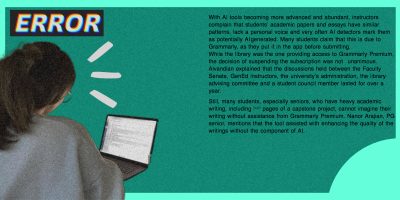
In today’s age of AI tools and media, people around the world heavily consume information through these platforms, leaving books in the shadows. This dramatic shift questions the value of traditional reading and whether books still hold relevance.
While reading as a practice is growing globally, reading physical books, kindles and literature is declining as teenagers and young adults prefer digital platforms like Wattpad over books. The Financial Times reports that technology has shifted the consumption of information from books and long stories to short social media posts.
Like other countries, Armenia has adopted this trend. However, the situation here is worse. According to the World Population Review, as of 2025, Armenia ranks 63rd out of 98 countries, with the average person reading 4.29 books per year.
Reading only four books annually is far from ideal. Clearly, most Armenians do not read, and this may be due to several factors.
AUA’s Armenian Language and Literature lecturer Dr. Vahram Danielyan, said that prices are a problem for his students. “Books are not overly expensive, but not everyone can afford to buy 3-4 books a month.”
Danielyan added that for some people, financial constraints make buying books a luxury. “There are those who say, ‘Instead of three cups of cappuccino, buy a book,’” he noted. “Bare necessities like coffee should not compete with books.”
A literary agent at First Literary Agency, Elina Harutyunyan, shared data on book sales at Antares, the leading publisher in Armenia. “We must consider two perspectives: absolute book sales and comparative growth over time,” she said.
“In absolute terms, book sales and readership are not at their highest levels, and there is certainly room for improvement.” Still, Harutyunyan noted that readership has increased compared to a decade ago.
Low book sales does not mean that society does not read. Some people, especially students, share their books with their peers and friends. Others borrow books from libraries. In my own experience, of the six books I read in the past two months, I borrowed five – either from libraries or from friends. This suggests that while surveys provide some idea of readership, they might not be fully accurate, as people also rely on sources other than libraries and bookshops.
Another reason for the low reading rate can be a lack of options and diversity. Very often, readers cannot find books that interest them. Harutyunyan mentioned that Antares has translations from over 31 languages and readers prefer foreign authors over the local ones.
Particularly, William Saroyan, Gabriel García Márquez, Orhan Pamuk, and Nobel Prize-winning authors have high sales. Currently, the best-sellers include Paulo Coelho’s The Alchemist, Daniel Keyes’ Flowers for Algernon, Marc Levy’s The Strange Journey of Mr. Daldrey, Elif Shafak’s The Forty Rules of Love, and William Saroyan’s Papa, You Are Crazy.
Danielyan said contemporary authors have always gained less recognition compared to classical ones. This surely does not mean that the Armenian contemporaries do not write about relevant issues. Though not all literature genres are fully developed in Armenia as we do not have a lot of horror or fantasy books, the topics of Armenian contemporaries vary from war to everyday problems.
However, Danielyan makes sure his students read Armenian contemporary literature. “As Armenian literature is a mandatory course for all AUA students, I am sure that almost 80-90 percent of our students read 10 contemporary Armenian authors in one semester,” he said.
Still, AUA students represent only a small segment of Armenian society and cannot reflect national reading trends. Though some part of our society reads Armenian authors, most people prefer translations. But this has its problems as well. “One of the challenges for us is finding skilled translators,” Harutyunyan said. “ Since we only work with direct translations, we are constantly searching for professionals in various languages to expand our selection and bring diverse cultures into Armenia,” she added. Thus, not only is Armenian society largely unaware of its local authors, but the shortage of skilled translators limits access to new foreign writers.
All these observations indicate that fostering a reading culture in Armenia remains a significant challenge. While people still consume information, the depth and richness that books offer are increasingly lost to fleeting digital content.
This is not a responsibility that lies solely with publishers, schools, or individual readers. It requires a national effort—from educators who inspire curiosity, to publishers who diversify their offerings and make books more affordable. Encouraging a reading culture means recognizing books not as luxuries, but as necessities for an informed and thoughtful society.
To read or not to read should no longer be the question. Armenia must choose to read—and to read more.












